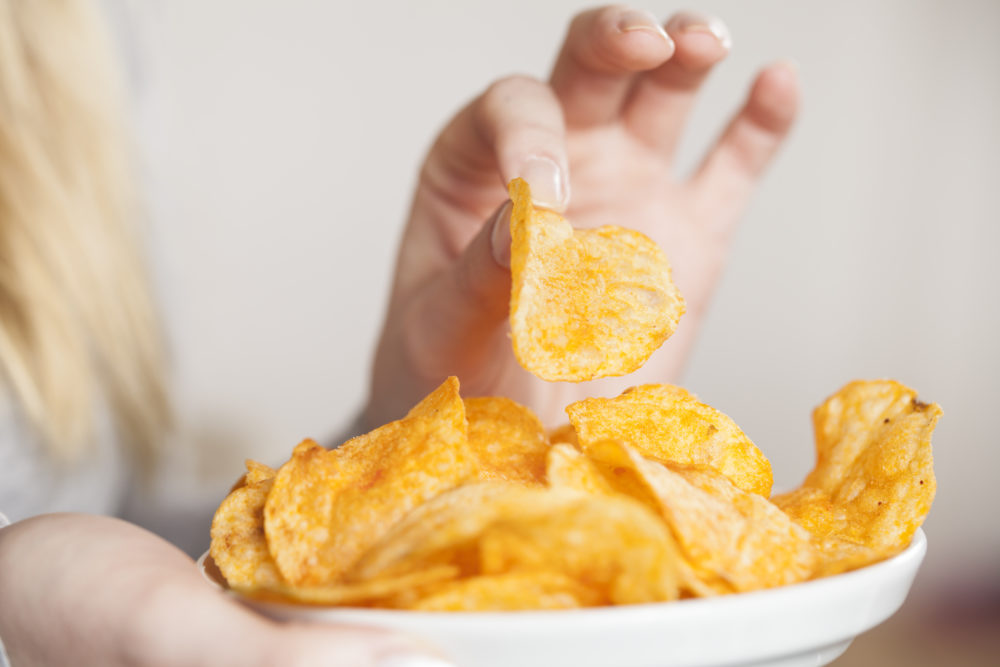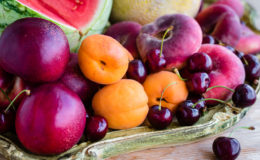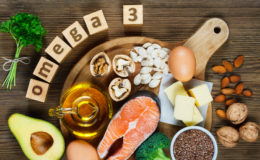Summer is here and so are the graduation parties and picnics and camping trips and the chips. We’ve all been there, experienced the lure of the chip bowl, the can of Pringles in the mini-mart when we stop for gas. We make a promise to ourselves to eat just one… or maybe two. There’s even the tagline, “Betcha can’t eat just one?” Inevitably, the battle is lost as soon as it starts and with seconds we are grabbing two or more chips per bite. What’s going on here?
I always thought that the reason for this was because of that addictive mix of salt and fat specially formulated to keep me eating. That is true to a degree, but thanks to Mark Schatzner and his fantastically researched book, The Dorito Effect, there’s so much more to it. Now that I really understand what was going on, I have changed the way that I experience chips and other processed foods.
Biologically, we are wired to eat with the sole purpose of nourishing our bodies with specific nutritional contents that come from food. Schatzker explains the idea of nutritional wisdom and cites studies with small children who self-select the perfect nutrition for themselves each day within an assortment of real food including fruits, vegetables, meat, organ meat, nuts, and eggs. Our nutritional needs actually vary from day to day depending on sleep, exercise, environmental exposure, growth, and other variables. These children did just that, they ate more protein during growth spurts, more foods with vitamin C when infected with a virus, and more cod liver oil for a vitamin D deficiency. It’s important that we are exposed to a variety of foods with distinct nutritional profiles to cover all the bases. In a natural setting, these studies show that we are more likely to eat more of a food that fulfills a nutritional deficiency. I can remember for myself, when I was on the swim team in high school and working as a lifeguard, I had cravings for foods that were high in potassium. I also suffered from an occasional irregular heart palpitation. It seems likely that I needed the potassium as en electrolyte given the amount of time was I was at the pool and my poor diet at the time.
In nature, nutrition comes from the flavor, so we tend to crave flavor that nourishes us. Once we receive the nourishment, we associate that flavor with the feeling. However, there are some problems that come with flavor in the modern world. First of all, we are dealing with the dilution of flavor and nutritional content in everything from tomatoes to cauliflower, to eggs, milk, and chicken because for the last several decades, they have been bred and produced to grow bigger and to have uniformity of appearance to appeal to consumers. While some food may have become cheaper, this has come with a huge and often unseen nutritional cost. Schatzker cites research by Donald Davis who worked at the Biochemical Institute at the University of Texas. He compared modern produce with that from the 1950s and was alarmed to discover that kale of 1950s had twice as much riboflavin as modern varieties, and 1950s asparagus had a whopping three times more vitamin C to name just a couple of examples. Davis sums up that we are getting more carbohydrates and water in our plants nowadays. That in itself starts to explain a lot about our modern eating habits.
Technology developed in the 1970s that allowed imitation flavors to really take off in popularity. This was great news for food producers who no longer had to procure expensive flavor ingredients and worry about shelf life. Schatzker recounts the story about how this was especially pivotal for vanilla was sourced in Madagascar. In the mid-1970s the newly formed Marxist government destroyed much of the precious harvest in order to drive up the global price. This left large companies scrambling for a source of vanilla for their recipes. Thanks to the new technology, gas chromatography, vanilla and any other flavor could now be produced. This became the perfect solution to flavoring for the packaged foods industry. Interestingly, if artificial flavor is imitating something natural, it’s allowed to be called a natural flavor. It is so easy to be fooled. Our bodies have this nutritional wisdom, which is connected to flavors, which in nature are connected to nutrition. That leads us back to the bag of chips.
When we bite into that first chip, it may be salsa or onion or cheese or BBQ flavored. If there were little or no flavor, it is very likely that you would eat one and that would be enough. Or it may be used as a vessel for cheese, salami, avocado, tuna, salsa, and other real foods. The “flavors” added to chips and crackers are eliminating the need to add something real, something with nutritional value. In search of nutritional fulfillment, we keep eating and eating and eating. We eat the whole bag of chips because it literally contains zero nutrition. Contrast this with organic broccoli, heirloom tomatoes, or grass-fed beef. Sometimes we eat more and sometimes we eat less based on feedback from our bodies once we have begun to eat. Just like those small children we too have the mechanism of nutritional wisdom. Unfortunately, nutritional wisdom can only function properly with real food. Remember the studies comparing food from the 1950s? Even with real food we eat more that we used to because it takes more to get the same amount of micronutrients. Micronutrients are the vitamins, minerals, and amino acids that occur naturally in real food. By breeding for size and speed of growth, much nutrition and flavor has been lost. We need to guide ourselves back to the inherent nutritional wisdom that we possess. We can do this by seeking out heirloom and organic varieties and most importantly seeking out the best real flavor in real foods!
The next time you are tempted by the bag of Doritos or other chips, consider the trade off. While I rarely eat chips anymore, I do enjoy the crisp, crunchy, saltiness of a good chip. I even like the flavors. However, aware of the nutritional factor, I am mindful to include other quality real foods at the same time so I will receive some nourishment and I won’t end up having consumed the entire bag!







